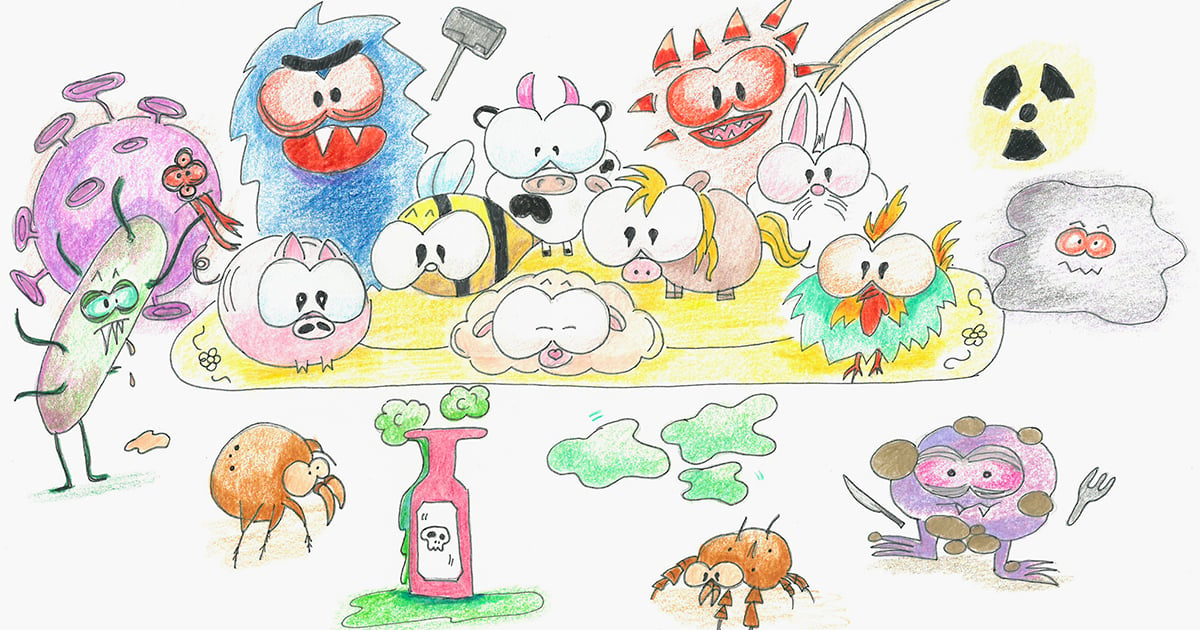The Influence of Environmental Factors on Farming Animals
A special issue of Agriculture (ISSN 2077-0472). This special issue belongs to the section "Farm Animal Production".
Deadline for manuscript submissions: 10 November 2024 | Viewed by 2108

Special Issue Editors
Interests: honey bee; interactions of environmental factors; bioelectromagnetism; zoohygiene; animal welfare
Interests: environmental threats to bees; insect physiology; pesticide toxicology; expression of detoxification genes; interactions of environmental factors
Special Issues, Collections and Topics in MDPI journals
Special Issue Information
Dear Colleagues,
A significant percentage of farms run activities related to animal production, which provides nearly 50% of global production and an even greater percentage of agricultural commercial production. This production is related to the use by humans of a small number of animal species, called farm animals, which include equines, cattle, cervids, pigs, sheep, goats, fur animals, poultry and honeybees. These animals are bred solely to obtain commercial production or draft power and to obtain reproductive material.
Over thousands of years of breeding, farm animals have been bred in such a way that desirable traits (milk production, meatiness, fur quality, number of eggs laid, etc.) are strengthened and undesirable ones (aggression, phenotypic variability, low productivity) are eliminated from the population. As a result of human selection, farm animals have also lost the genes responsible for many traits, including resistance to unfavorable environmental factors. This phenomenon is a particular threat in cases of intensive animal breeding in small areas, where parasites and pathogens can easily spread, and in the face of threats posed by human activity, such as climate change, chemical pollution (e.g., plant protection products, antibiotics, heavy metals), physical alterations of environments, (electromagnetic fields, lighting or temperature disturbing the natural cyclicity) or globalization (spread of pathogenic factors to new areas).
In this Special Issue, we intend to focus on the threats posed by environmental factors (both natural and anthropogenic) to farm animals. This is a particularly current and very broad topic, covering many fields of science, such as biology, chemistry, parasitology, veterinary medicine, biophysics, toxicology, etc. Therefore, we invite you to submit manuscripts to our Special Issue. Both original research articles and reviews will be accepted.
Dr. Anna Koziorowska
Dr. Bartosz Piechowicz
Guest Editors
Manuscript Submission Information
Manuscripts should be submitted online at www.mdpi.com by registering and logging in to this website. Once you are registered, click here to go to the submission form. Manuscripts can be submitted until the deadline. All submissions that pass pre-check are peer-reviewed. Accepted papers will be published continuously in the journal (as soon as accepted) and will be listed together on the special issue website. Research articles, review articles as well as short communications are invited. For planned papers, a title and short abstract (about 100 words) can be sent to the Editorial Office for announcement on this website.
Submitted manuscripts should not have been published previously, nor be under consideration for publication elsewhere (except conference proceedings papers). All manuscripts are thoroughly refereed through a single-blind peer-review process. A guide for authors and other relevant information for submission of manuscripts is available on the Instructions for Authors page. Agriculture is an international peer-reviewed open access monthly journal published by MDPI.
Please visit the Instructions for Authors page before submitting a manuscript. The Article Processing Charge (APC) for publication in this open access journal is 2600 CHF (Swiss Francs). Submitted papers should be well formatted and use good English. Authors may use MDPI's English editing service prior to publication or during author revisions.
Keywords
- farming animals
- environmental factors
- natural or anthropogenic factors
- animal production
- influence on animals






